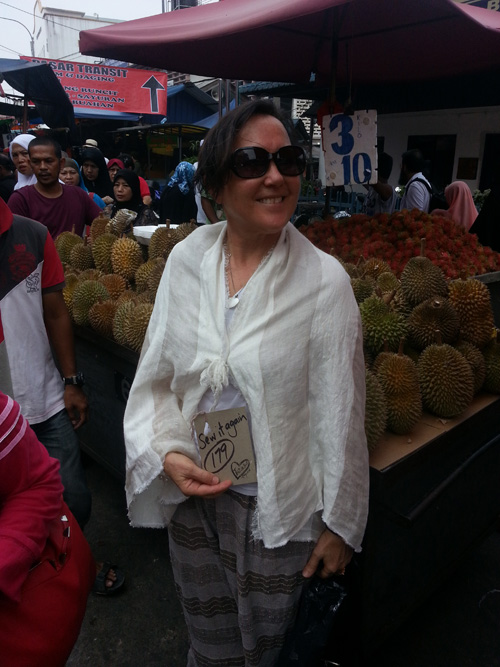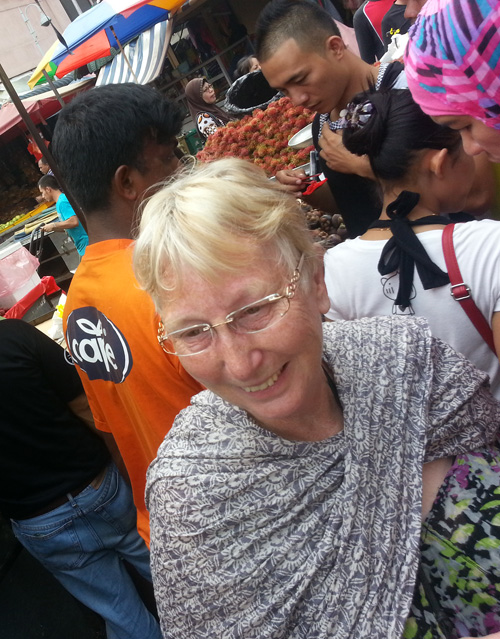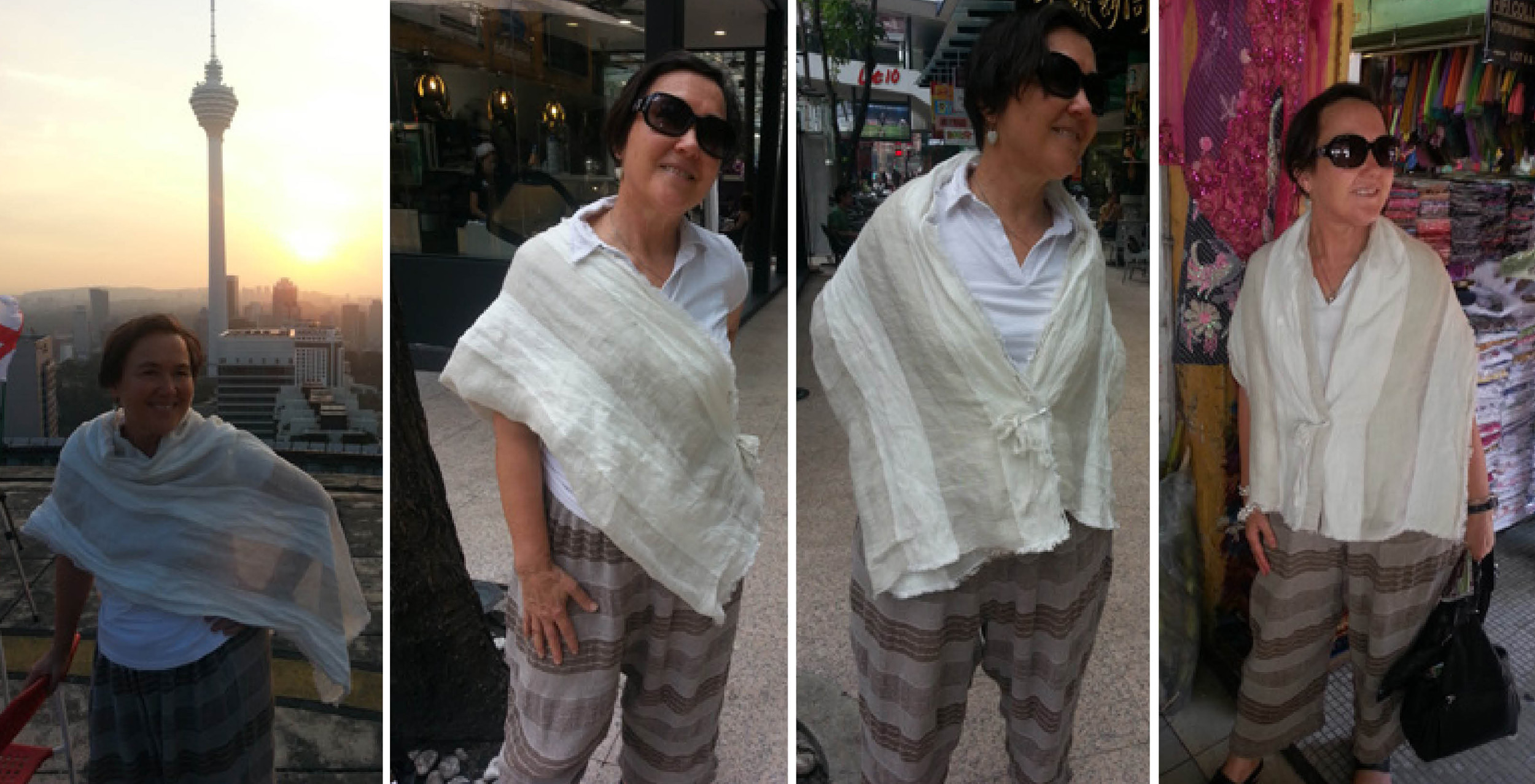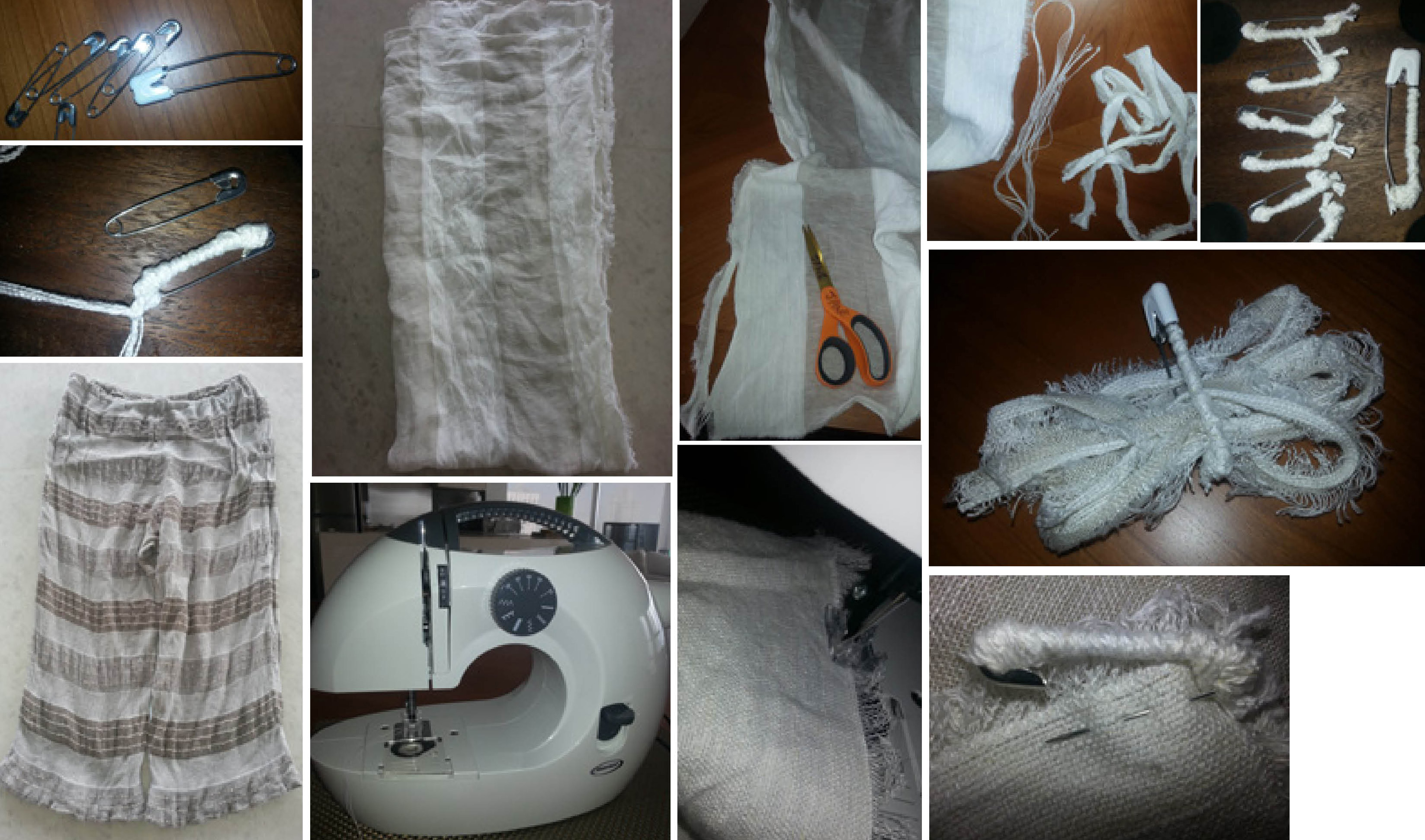 Linen is an ancient fibre made from flax which lasts a long time and is sustainable because its production does not usually involve a lot of water and chemical use. I love the crushed look linen gets after washing and wear it that way without ironing as a badge of honour – saving effort and energy.
Linen is an ancient fibre made from flax which lasts a long time and is sustainable because its production does not usually involve a lot of water and chemical use. I love the crushed look linen gets after washing and wear it that way without ironing as a badge of honour – saving effort and energy.
The upcycled part of Sew 179 is the strip of linen fabric with frayed edges which I cut into two wraps a while back. One remains as a wrap, as worn below when I visited to Heli Lounge Bar to enjoy KL’s landmarks. The other strip I’ve turned into a versatile cape, secured in its many incarnations by fabric-covered safety pins.
 There are many different ways this cape can be worn, and I’ve demonstrated a few in photos below, taken with my aunt Kate McLachlan, right, when we were out and about in KL today. Kate is returning from the 8th World Congress of Coloured Sheep Breeders in France and we’re catching up briefly before she returns home to Otago, New Zealand. She in a woman of threads and traditional crafts, a Ngai Tahu elder, and over the years we’ve shared these interests during visits to the sheep farm on which we both grew up. This shared history and memory of traditions, the way clothing used to be made with natural fibres, of known and transparent provenance, has helped inspire my Sew it Again project to demonstrate how we can bring traditional home sewing skills into the 21st century.
There are many different ways this cape can be worn, and I’ve demonstrated a few in photos below, taken with my aunt Kate McLachlan, right, when we were out and about in KL today. Kate is returning from the 8th World Congress of Coloured Sheep Breeders in France and we’re catching up briefly before she returns home to Otago, New Zealand. She in a woman of threads and traditional crafts, a Ngai Tahu elder, and over the years we’ve shared these interests during visits to the sheep farm on which we both grew up. This shared history and memory of traditions, the way clothing used to be made with natural fibres, of known and transparent provenance, has helped inspire my Sew it Again project to demonstrate how we can bring traditional home sewing skills into the 21st century.
Global clothing supply chains these days mean there is a surfeit of ready-to-wear garments, so sewing for yourself is often seen as madness. My proposition is that REfashioning unworn, waste, and reject clothing that already exists is a way of continuing to use sewing skills – and apply them to reducing waste and recreating original, bespoke garment that suit your own individual style.
I used fab pins (fabric covered safety pins) for this simple upcycle because I didn’t have any buttons to hand and they’re so versatile and easy. I cut a strip off the long edge of the linen and frayed away excess threads so the fringed edge was restored. Using my dinky travel sewing machine (a Semco) which I carried with me as hand luggage to KL, I zigzagged to secure the edge (catching the outside zig just at the edge before the fringe begins). [The airport scanner operator asked me what the shape was in my luggage, but more out of interest than any concern with it, because she didn’t ask to inspect it]. The machine only weighs a few kilograms, doesn’t go very fast, and just does straight and zigzag stitch at set lengths, but so far so good.
Anyway, I covered six ordinary safety pins by using 3 long threads which are threaded through the end of the pin to begin, then wrapped up and back again along the fixed edge of the pin, then a knot tied to secure the ends. After doing the same with a large nappy pin, I then loosely folded the offcut linen strip and jabbed the pin through it for a decorative effect. The strip of linen is folded in half lengthwise, and the fab pins used (3 either side in row, about five cm apart) to secure the raw edges so they become sleeves (note, most of the garment remains open so it can wrap around your body at back (as shown in Sew 179 image) and be secured at front with the fab nappy pin.

